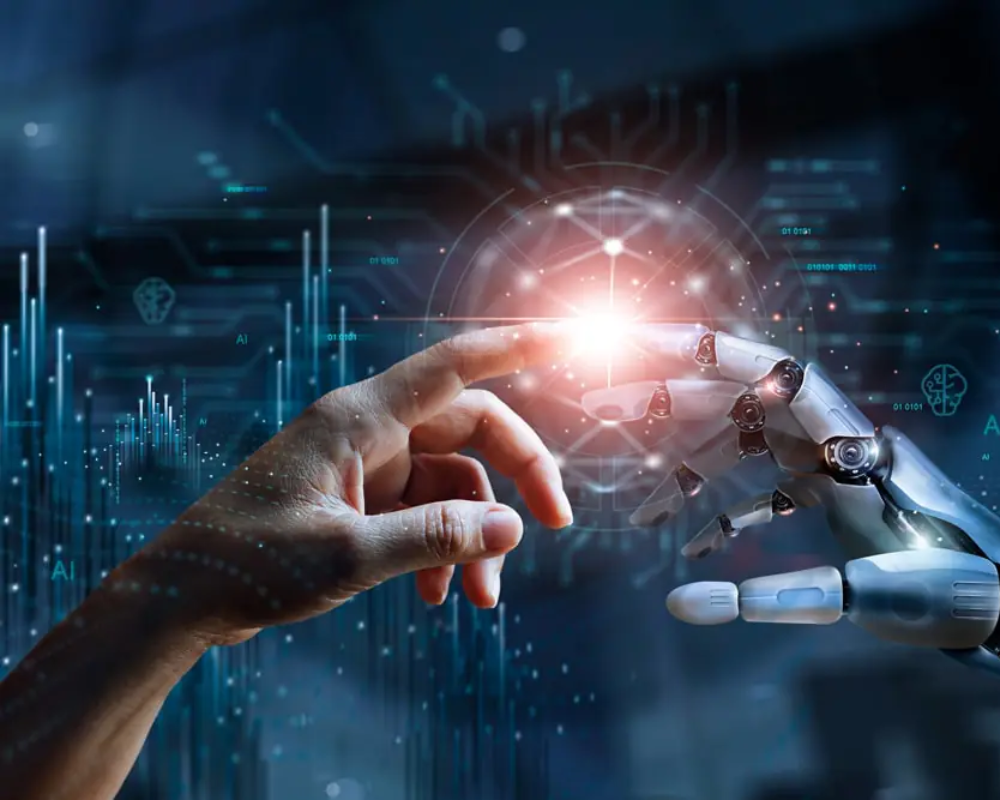What Really Happens Behind AI
Artificial intelligence (AI) is present in many aspects of modern life, but few people truly understand what goes on behind the scenes of this revolutionary technology. That’s why we’re going to reveal surprising truths about how AI works, each with its own characteristics that help you better understand its impact and mechanisms. With this information, you’ll see how AI is transforming the world, often in ways that are invisible to the average user. The growth of AI raises important questions about how it works, its capabilities, and its limitations.
Machine Learning: The Brain of AI
First, machine learning is one of the keys to understanding what happens behind AI.
It allows systems to learn and improve over time, without explicit programming for each situation.
Machine learning uses algorithms that analyze large amounts of data to identify patterns and make decisions.
In this way, these algorithms are able to recognize complex patterns that would be impossible for the human mind to process quickly.
Additionally, the system automatically adjusts its processes based on new data, becoming more efficient over time.
As well, it offers flexibility to adapt to different situations and environments, which is crucial for the success of various AI applications.
Furthermore, the ability to predict outcomes based on past data is one of the most powerful aspects of this technology.
It is also applied in a variety of areas, from product recommendations to complex medical diagnostics.
Ultimately, machine learning enables AI to operate at a human-like level for some specific tasks.
Neural Networks: The Structure of Artificial Thought
The second important pillar that reveals what really happens behind AI is artificial neural networks.
They mimic the functioning of the human brain, allowing AI to perform complex tasks more effectively.
Neural networks are composed of several layers of “neurons” that process information sequentially.
Additionally, this architecture allows AI to understand and process data in a non-linear manner, which is essential for dealing with unstructured information such as images and text.
As well, neural networks can be trained to perform a variety of tasks, from recognizing faces to predicting market trends.
What’s more, they are the basis for many advanced technologies, such as speech recognition and machine translation.
It is also a technology in constant evolution, with new discoveries that expand its capabilities.
Ultimately, these networks are capable of learning and improving over time, just like the human brain.
Natural Language Processing: The Language of AI
Next, natural language processing (NLP) is another key revelation to understanding what really happens behind AI.
It enables AI to understand, interpret, and respond to human language effectively.
Well, NLP uses advanced algorithms to analyze and understand the structure and meaning of words and sentences.
This way, it allows AI to interact more naturally with humans, making communication more fluid.
Furthermore, NLP is essential for several applications, such as virtual assistants and automatic translators.
As well, it analyzes not only words, but also the context in which they are used, providing more accurate answers.
Furthermore, NLP helps AI understand nuances and variations of human language, which is crucial for effective communication.
It is also capable of processing large volumes of text quickly, making it a valuable tool in a variety of industries.
Finally, natural language processing is constantly improving, bringing AI closer to human-like communication.
Decision Making: AI in Action
Decision making is a crucial aspect that reveals what really happens behind AI.
It involves choosing an action based on analyzed data and predictions made by the system.
Well, AI uses decision algorithms to choose the best possible action among several options.
Additionally, AI can make decisions in real time, which is especially useful in areas such as finance and transportation.
As well, it constantly evaluates the results of its decisions to improve accuracy and efficiency over time.
What’s more, AI can handle large volumes of information that would be impossible for humans to process effectively.
It also automates decisions that previously depended on human intervention, freeing up time and resources.
Finally, AI decision-making is present in various sectors, from industrial automation to personal assistants.
Ethics and Responsibility: The Future of AI
Finally, ethics and responsibility are essential issues that are also part of what actually happens behind the scenes of AI.
The development and use of AI raises concerns about privacy, security, and fairness.
Because AI has the potential to make decisions that directly impact people’s lives, which requires careful supervision.
Thus, the lack of transparency in how algorithms make decisions is a growing concern.
Furthermore, it is necessary to ensure that AI is used fairly, without discrimination or bias.
Furthermore, AI regulation and governance are areas under development, with the aim of ensuring the safe and ethical use of this technology.
Furthermore, AI needs to be designed to protect users’ privacy by minimizing data collection and misuse.
It also raises questions about the impact on jobs as automation replaces roles previously performed by humans.
Finally, ethics in AI is an ever-evolving area, with new challenges emerging as technology advances.
Conclusion
What really happens behind AI goes far beyond its apparent functionalities.
From machine learning to neural networks and natural language processing, each technology plays a crucial role in making this powerful tool work.
By understanding these revelations, we can better understand how AI is transforming the world, and also how we can use it effectively and responsibly in our lives.
Thus, AI continues to evolve, bringing innovations and challenges that require a careful and informed look at its development and impact.













